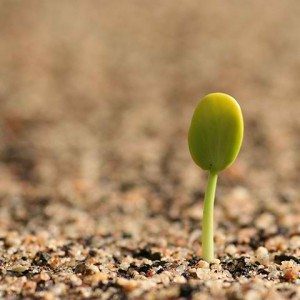If you’re at all familiar with vegetables outdoors, you might have noticed that the packets of seed you purchase every spring all have a ‘packed for’ date somewhere on the envelope. If you purposefully purchase outdated seed, chances are you’ll have a disappointing germination rate, perhaps no sown seed will germinate at all. This leads the average person to assume that seed for fruits, vegetables and herbs have a very short shelf life.
Nothing could be further from the truth. Its all in how the seed has been stored since it was harvested, packed and later on by the store you purchased it from. This is really good to know, since indoor gardening gives you far less space for producing a variety of crops that having a backyard garden does. You might envision planting starter plants from cellpaks much like you would tomatoes and green peppers bought from the local garden center for your traditional garden. This limits the time of year you can grow these plants to a single season. Also, it’s not always a good idea to put plants from other environments into your indoor garden, as they may bring pests or diseases with them. Seed lets you start plants whenever you wish too, and keeps the risk of unwanted surprises much lower.
Where do you get seed from to start your hydroponic plants? The same place you would for a backyard garden. The best selection of variety will be found in ordering your seed from a mailorder seed dealer. D0 check out their reputation for quality seed! The more exciting varieties are best sought out from the seed specialists. Your local garden center and retail store will carry only common seeds that they know will sell easily.
Saving seed from last year to plant in the new garden can work out fine and it can result in poor to no germination. Outdoors this failure is a disappointment, in your indoor garden the event is much more expensive. Proper storage of leftover seed will result in excellent germination rates, even after several years have passed.
 No matter what type of seed it is, the viability will remain intact if it is kept in a cool, dark place that is totally free of moisture . You can’t depend on kitchen baggies for the task, but you can with a container with an excellent seal such as Tupperware or Rubbermaid plastic food storage boxes. Those that are for freezer storage will be the best of all for ensuring they are air tight when properly closed to keep the interior devoid of moisture from the air. Look for selections without transparent sides and lids. If you can’t find something along these lines, you can always use a piece of black garbage bag to wrap the seed packet in for storage in the container. This will protect them from even a glimpse of sunlight.
No matter what type of seed it is, the viability will remain intact if it is kept in a cool, dark place that is totally free of moisture . You can’t depend on kitchen baggies for the task, but you can with a container with an excellent seal such as Tupperware or Rubbermaid plastic food storage boxes. Those that are for freezer storage will be the best of all for ensuring they are air tight when properly closed to keep the interior devoid of moisture from the air. Look for selections without transparent sides and lids. If you can’t find something along these lines, you can always use a piece of black garbage bag to wrap the seed packet in for storage in the container. This will protect them from even a glimpse of sunlight.
Naturally, you will want to choose a place to store the seed box that is far from any heating vents. A spot in the back corner of a closet or cupboard is perfect. When you do take seed out of the packets, be sure to have dry hands. Promptly seal the packet back up and return it to the moisture-free, dark space. This seed should be viable and result in reliable germination for up to five years, if not longer.
Be sure to keep your seed packets closed inside the container too. You don’t want to lose any to the open container and not be able to identify them, or for the different types of seed you’re storing to get mixed together. Paper clips work great after folding the top over a couple of times.
Keeping a supply of your favorite seeds on hand year around will be important to indoor gardeners. With seed storage and such an extended shelf life, you’ll never be without the next set of starter plants when you want them again. Plan ahead and order new seed in the winter or spring when it is fresh and in good supply. Many seed dealers only ship orders during this part of the year.